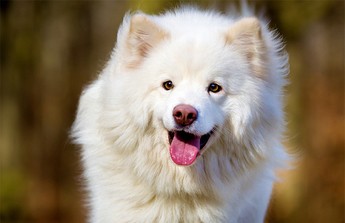Compared to other breeds, Norwegian Buhunds do not need extensivegrooming. They are naturally clean and basically odorless dogs, even when wet. The Buhund has a double coat: an outer coat that is thick, rich, hard, and smooth lying, and a soft, dense, and woolly undercoat. The coat sheds most foreign substances with ease and dries itself after a bath. Buhunds do need to be brushed two to three times a week, and more often during thesheddingseason—like other double-coated dogs, Buhunds blow their undercoats once or twice a year.
Regular brushing will keep the Buhund clean. It’s rare that he will need a bath. The rest is basic care. Trim the nails as needed, usually every week or two. Brush the teeth frequently with a vet-approved pet toothpaste for good overall health and fresh breath.
This is a very active breed that needs to be exercised every day, with a long, brisk walk or jog. While out on the walk the dog must be made to heel beside or behind the person holding the lead, as in a dog's mind the leader leads the way, and that leader needs to be the human. In addition, they greatly enjoy sessions of play.The breed can also exercise the mind and body by participating inobedience,tracking,agility, and other activities that dog and owner can enjoy together.
The Buhund should be fed a diet of high-quality, dry kibble. It’s best to use food that has been formulated for high-energy dogs. The amount of food the dog requires will depend upon his normal activity level. A Buhund that is out herding livestock every day will require more food than a dog that merely plays in the yard and hikes on the weekends. Your veterinarian can help you decide how much food your Norwegian Buhund needs.
Treatscan be an important aid in training, but giving too many can cause obesity. Learn about whichhuman foodsare safe for dogs, and which are not. Check with your vet if you have any concerns about your dog’s weight or diet.Clean, fresh water should be available at all times.
The Norwegian Buhund is a fairly healthy dog. Its average life span is 12 to 15 years. In general, Norwegian Buhunds tend to be healthy and hardy.Responsible breedersscreen their breeding stock for health conditions such aship dysplasia, von Willebrand’s disease, and eye disease. Potential puppy buyers are always advised to confirm the health screening of the sire and dam.
Compared to other Spitz and Northern breeds, Norwegian Buhunds are easier to train, but they still retain the independent characteristics of such breeds. Buhunds do have a desire to please, but their independence is often stronger, which makes it challenging to maintain their focus and convince them to continue training. Fortunately, most Buhunds are highlyfood-motivated, therefore positive-training techniques such as clicker training work well. At the same time, most Buhunds are extremely sensitive to their environment, which makes them challenging in the dog show ring.
The Norwegian Buhund does very well in events such as obedience, herding and agility trials. This breed has also been used for service, search and police work. His versatility and intellect make him a great all around dog.











